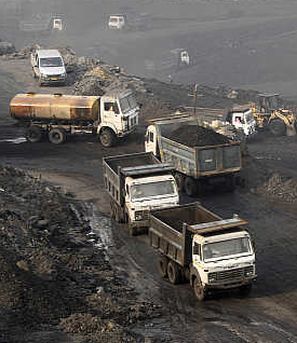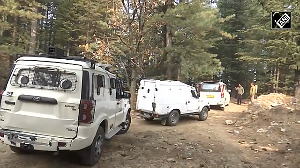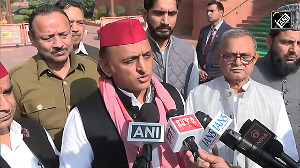Some of the conditions laid down by the Supreme Court while allowing resumption of mining in Goa are instructive, says Subir Roy.
 The boom and bust saga of iron ore mining in India is slowly coming to an end with mining restrictions already extensively lifted in Karnataka and now partially in Goa.
The boom and bust saga of iron ore mining in India is slowly coming to an end with mining restrictions already extensively lifted in Karnataka and now partially in Goa.
The global boom in the early 2000s and the near-insatiable Chinese demand for steel and its raw materials in the run-up to the Beijing Olympics of 2008 brought about an iron ore mining boom in India, much of which was illegal.
The environment, public health and infrastructure such has roads suffered seriously, not to speak of governments losing thousands of crores of potential revenue.
Such quick generation of big money had to affect politics — the rise and fall of ministries in Karnataka after 2004 can be traced to their making and unmaking by the newly emerged mining czars.
Inevitably, public interest litigation was launched, the Justice M B Shah commission of inquiry was appointed, and state governments and the Supreme Court put a stop to iron ore shipment and mining in Karnataka and Goa (Odisha took partial action) a couple of years ago.
An empowered committee from the Centre was asked to go into the irregularities and outline a path for journeying back to normal life.
During this period of disruption, the economy suffered. India, known for its rich deposits of high-grade iron ore (which gives its steel industry a global competitive advantage), became a net importer of iron ore.
Its exports over a four-year period fell from 117 million tonnes in 2009-10 to around 15 million tonnes in 2013-14. (There is a subplot to this, regarding the imposition of a 30 per cent export duty on iron ore pellets through lobbying by the steel industry, but that is another story.)
The railways, which first made hay (higher freight revenue) when the sun shone, took a hit later by losing a lot of freight tonnage.
This whole cycle has also had bigger political fallout. Through the boom years – the boom was partially fuelled by illegal and harmful iron ore extraction – the first United Progressive Alliance (UPA) government was the toast of liberal economists and the business media for uncaging the Indian tiger.
Then, when the ban on iron ore mining was imposed, the second UPA government was in the doghouse for policy paralysis, which led to severe economic slowdown — fuelled in part by the non-existent iron ore. (The index of industrial production, which includes mining and quarrying, floundered.)
Some of the conditions laid down by the Supreme Court while allowing resumption of mining in Goa are instructive. It placed a cap of 20 million tonnes per annum on output, less than half of the pre-ban output, on the basis of the finding by an expert committee that evaluated the impact of mining.
No mining leases will be granted within a kilometre of national parks and wildlife sanctuaries. The ministry of environment and forests will have to identify within six months the eco-sensitive areas around national parks. The issuing of deemed lease renewals has to stop.
Claude Alvares, director of the Goa Foundation, on whose public interest litigation – argued by Prashant Bhushan – the Supreme Court has been acting, asserts (in an interview with Herald Review) that it was the current Bharatiya Janata Party chief minister of Goa, Manohar Parrikar, who, as the then chairman of the state public accounts committee (PAC), documented with “zest” the illegal mining, which “he said involved a theft of Rs 3,500 crore ( Rs 35 billion). The first order to suspend mining in the state was issued by his government on September 10, 2012…
This was done after the revelations of the Shah Commission Report. Obviously he [Mr Parrikar] was seriously disturbed by it, because it more or less confirmed his own earlier findings”.
The Goa Foundation started filing writ petitions before the Bombay High Court from 1992 onwards against several mining companies, recalls Mr Alvares, adding, “We clubbed them all together in one major petition in the Supreme Court and this enabled us to put all our demands in one single place before one single bench which appeared to be convinced that we had legitimate grievances.”
What does this say about how India is run? Illegality and wrongdoing are deeply entrenched and have survived with the highest political backing. Mr Parrikar, who had threatened to seek Narendra Modi’s help when he came to power to lift the mining ban, was himself earlier removed from the chairmanship of the Goa PAC after submitting the report on illegal mining that has been referred to above.
Civil society and the Supreme Court may try to set things right, but the process is painful and time-consuming.
Also, the court cannot be everywhere. It has severely reprimanded the Goa pollution control board, but how many such boards across the country will defy the state government and do the right thing? Anybody who thinks that illegality and wrongdoing will fall substantially under Mr Modi needs to have his head examined.










